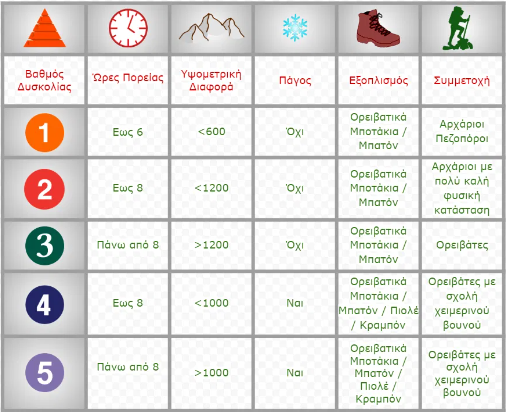Difficulty points of hiking-mountaineering routes

The classification of a route's difficulty is quite complex, as it depends on the hiker's abilities and the subjective judgment of the person who rated it.
Beginners should be aware that they need to give themselves time to adjust and reach a satisfactory level of performance, as they are putting both their body and mind in a new situation and in a completely different environment from what they are used to. For new hikers, the difficulty level increases when challenging weather conditions (rain, snow, wind) arise, as well as depending on the terrain (mud, river crossings, rocky ground).
In combination with the emotional anxiety that may arise from the thought of delaying the group or worrying about not being able to complete the hike, the factors above can result in not enjoying this new activity.
The following grading system is the most recent and serves as a tool for mountaineering clubs to provide a common standard for the classification of a route's difficulty, which is listed next to each route. The difficulty level also takes into account the season during which the hike will take place (summer or winter).

**Difficulty Levels**
The "+" symbol is added to the difficulty level (e.g., 2+, 3+, etc.) when there are climbing sections, exposed ridges, gullies, or snow/ice slopes steeper than 40 degrees. Participation in such routes requires excellent physical condition and familiarity with mountain terrain. For winter ascents, basic knowledge of technical safety methods for securing a partner is also required.